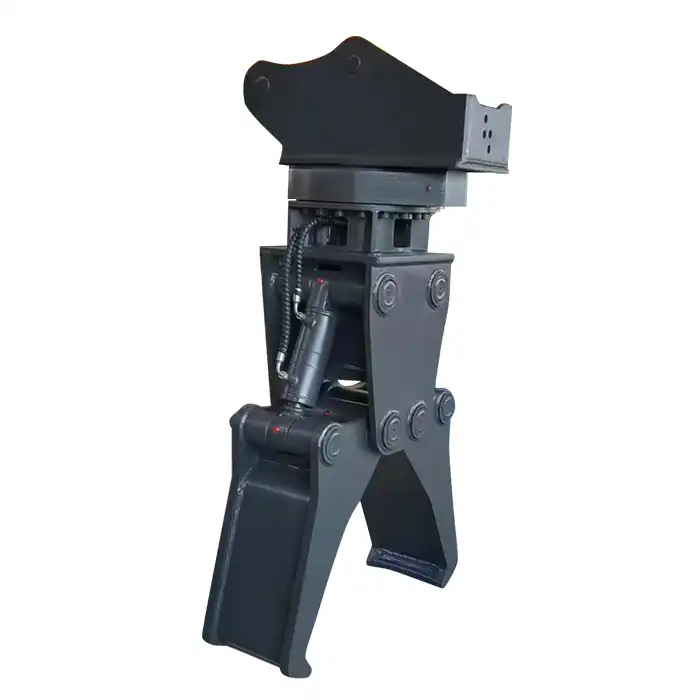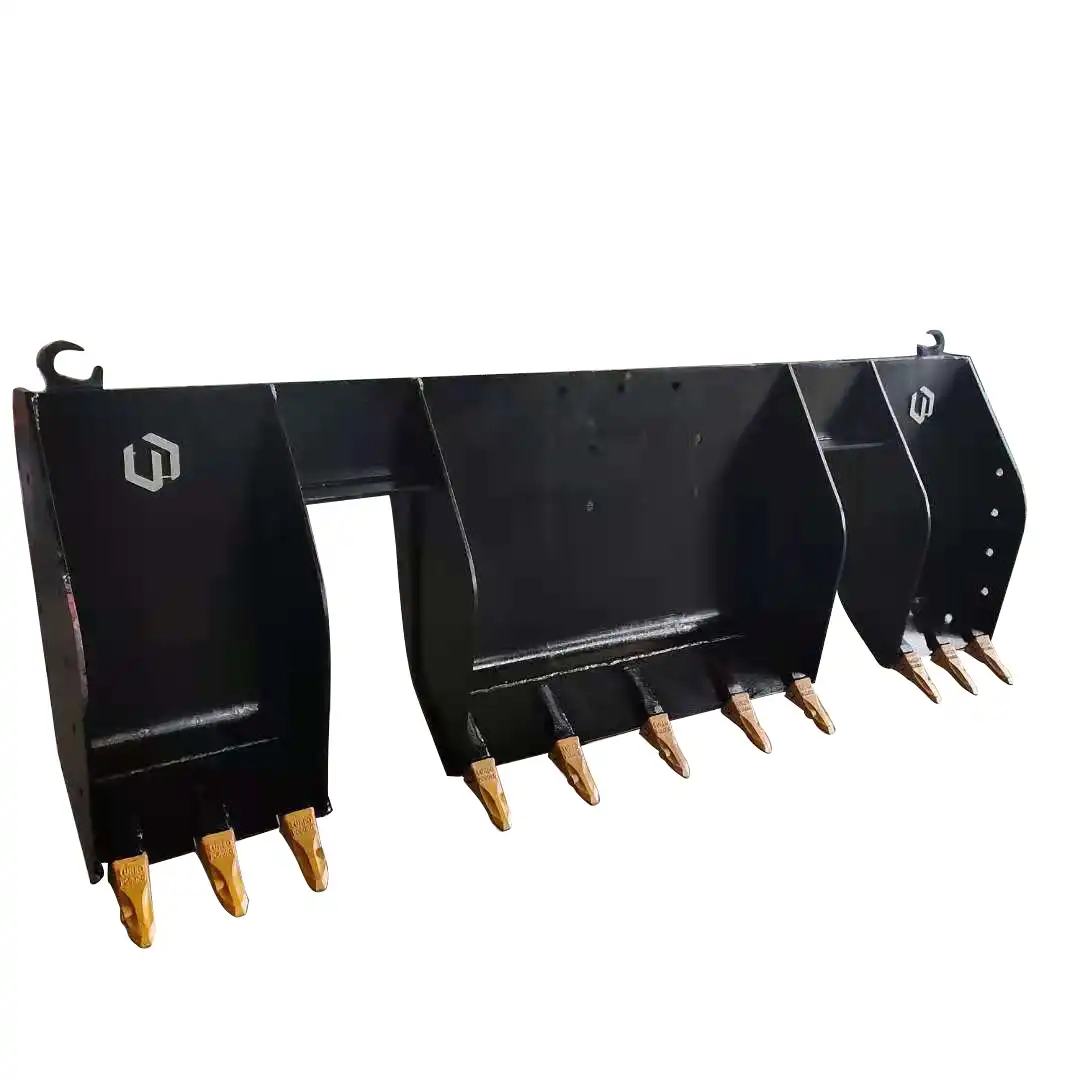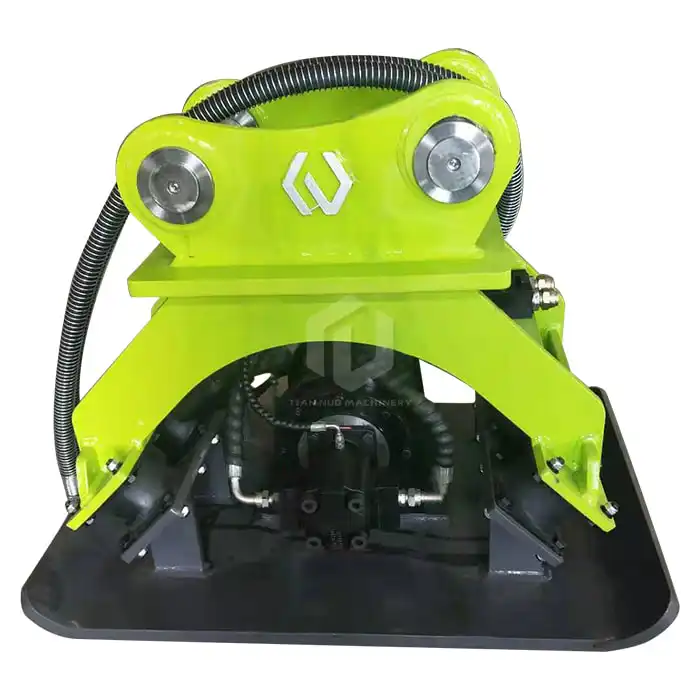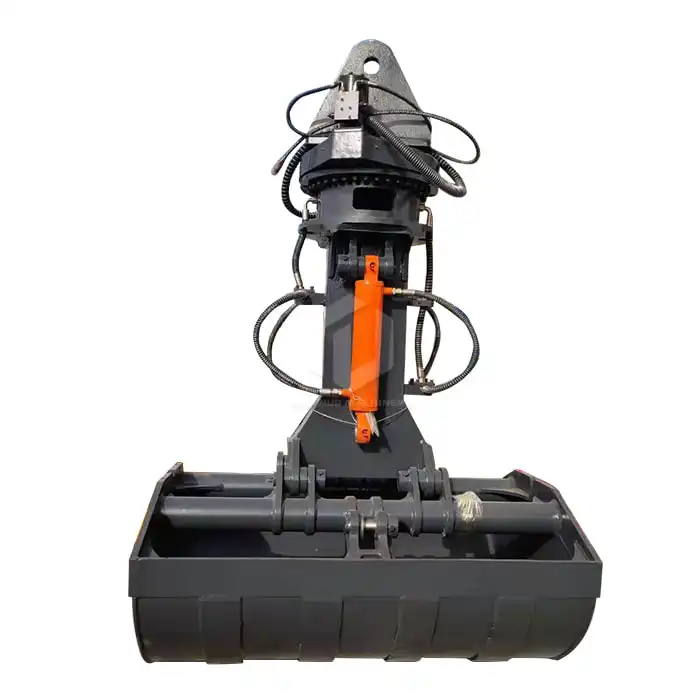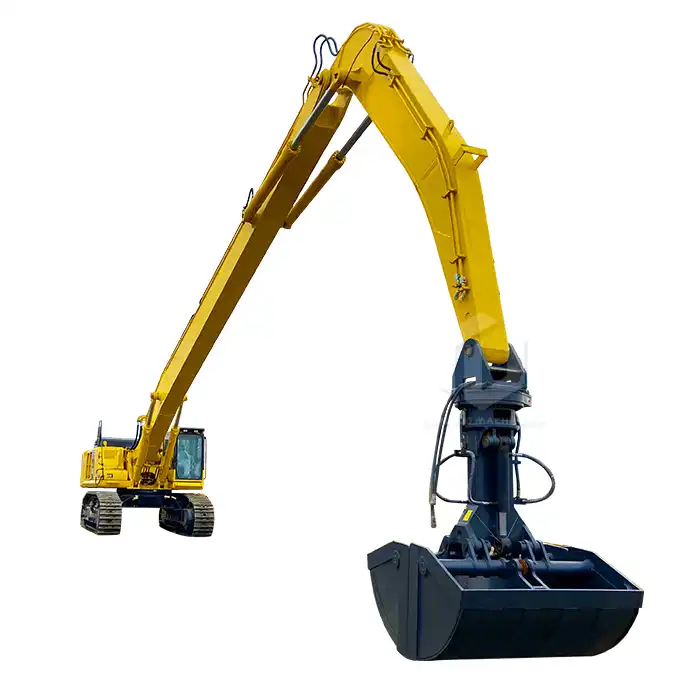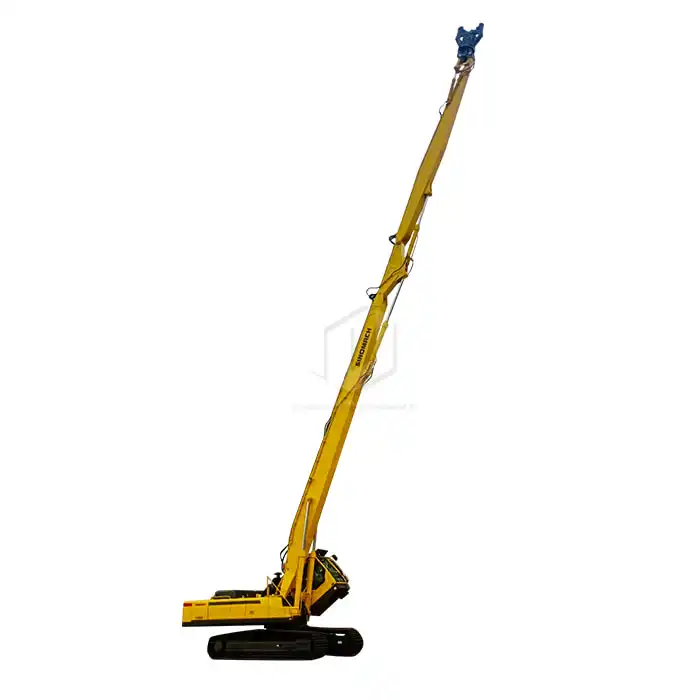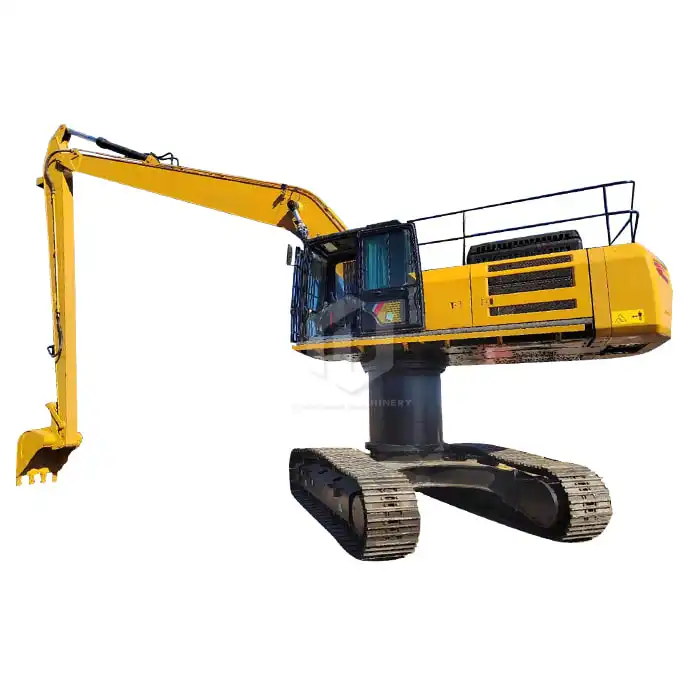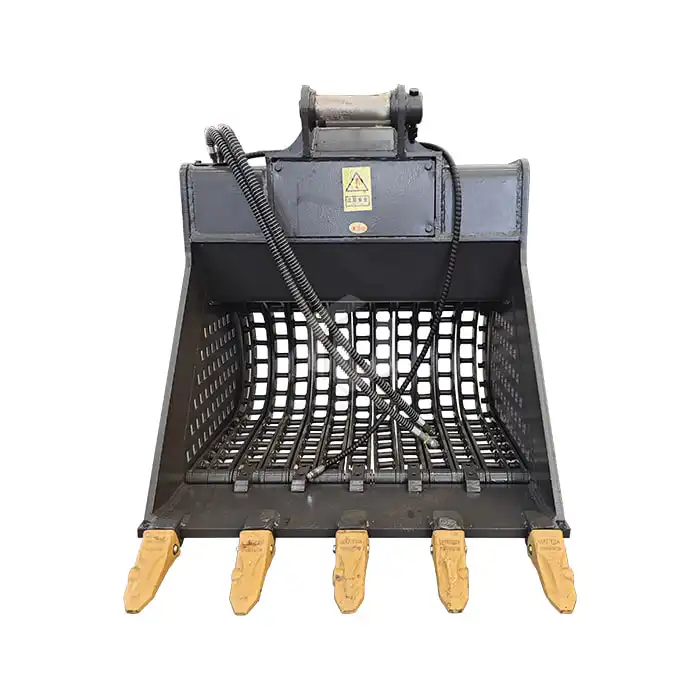Excavator Extension Arm Replacement
Excavators are the backbone of many construction and mining operations, and their efficiency largely depends on the condition of their components. One crucial element that often requires attention is the excavator extension arm. This vital piece of equipment allows operators to reach greater depths and heights, significantly expanding the machine's capabilities. However, like any mechanical component, extension arms are subject to wear and tear and eventually need replacement.

When should you replace an excavator extension arm?
Determining the right time to replace an excavator extension arm is crucial for maintaining optimal performance and safety on the job site. While there's no one-size-fits-all answer, several factors can indicate that it's time for a replacement:
1. Age and Usage: The lifespan of an excavator extension arm can vary depending on the intensity and frequency of use. Generally, arms used in heavy-duty applications or harsh environments may need replacement sooner than those used in lighter operations. Regular inspections become increasingly important as the arm ages.
2. Visible Damage: Any visible cracks, bends, or deformations in the arm structure are clear indicators that replacement is necessary. These issues can compromise the arm's structural integrity and pose significant safety risks.
3. Performance Issues: If you notice a decrease in the excavator's reach or lifting capacity, it could be due to a weakened extension arm. This reduction in performance can impact productivity and may signal the need for replacement.
4. Increased Maintenance Frequency: If you find yourself repairing the extension arm more frequently, it might be more cost-effective in the long run to invest in a new one rather than continuing with repairs.
5. Safety Concerns: If there's any doubt about the arm's ability to safely handle loads, it's better to err on the side of caution and replace it. The safety of operators and nearby workers should always be the top priority.
6. Technological Advancements: Sometimes, replacing an older arm with a newer model can bring benefits in terms of improved design, materials, or features that enhance performance and efficiency.
It's important to note that regular maintenance and inspections can help extend the life of an excavator extension arm and allow you to plan for replacement before a critical failure occurs. Consulting with the manufacturer or a qualified technician can provide valuable insights into whether replacement is necessary based on your specific circumstances.
What are the signs of a worn-out excavator extension arm?
Recognizing the signs of a worn-out excavator extension arm is crucial for maintaining the efficiency and safety of your operations. Here are some key indicators to watch out for:
1. Visible Wear and Tear: Look for obvious signs of physical damage such as dents, cracks, or bends in the arm structure. Pay special attention to welded joints and stress points, as these areas are particularly susceptible to fatigue.
2. Unusual Noises: If you hear creaking, grinding, or other unusual sounds when operating the extension arm, it could indicate worn bearings, loose components, or structural issues.
3. Reduced Stability: A worn-out arm may exhibit increased wobbling or instability during operation, particularly when lifting heavy loads or reaching maximum extension.
4. Hydraulic Issues: Problems with the hydraulic system, such as slow response times, jerky movements, or fluid leaks around the arm, can be signs of internal wear or damage.
5. Excessive Play in Joints: Check for any unusual looseness or play in the pivot points and connections of the arm. Worn bushings or pins can lead to decreased precision and potential safety hazards.
6. Corrosion or Rust: While some surface rust is normal, extensive corrosion can weaken the arm's structure and compromise its integrity.
7. Decreased Performance: If the arm struggles to lift loads it previously handled with ease, or if its reach seems diminished, these could be signs of structural weakening.
8. Misalignment: Check if the arm appears misaligned when fully retracted or extended. This could indicate bending or warping of the structure.
9. Increased Fuel Consumption: If your excavator is using more fuel than usual to perform the same tasks, it could be due to the increased strain of operating a worn-out extension arm.
10. Frequent Repairs: If you find yourself constantly repairing or adjusting the extension arm, it might be more economical to replace it entirely.
Remember, these signs often develop gradually, which is why regular inspections are crucial. It's advisable to keep detailed maintenance records to track the frequency and nature of issues over time. This can help you identify patterns and make informed decisions about when to replace the excavator extension arm.
If you notice any of these signs, it's important to have the arm inspected by a qualified technician. They can provide a professional assessment and recommend whether repair or replacement is the best course of action. In some cases, addressing issues early can prevent more costly repairs or downtime in the future.
What are the steps for replacing an excavator extension arm?
Replacing an excavator extension arm is a complex process that requires careful planning, specialized equipment, and expertise. While the exact procedure may vary depending on the make and model of your excavator, here's a general overview of the steps involved:
1. Preparation and Safety Measures:
- Ensure the work area is clear and level.
- Position the excavator on stable ground and engage all safety locks.
- Relieve hydraulic pressure from the system.
- Gather all necessary tools and equipment, including a crane or lift with sufficient capacity.
- Refer to the manufacturer's manual for specific instructions and safety precautions.
2. Removal of the Old Arm:
- Disconnect all hydraulic lines, ensuring to cap them to prevent contamination.
- Remove any electrical connections or sensors attached to the arm.
- Unbolt and remove the bucket or attachment at the end of the arm.
- Secure the arm with appropriate rigging to support its weight.
- Remove the pins or bolts connecting the arm to the boom and stick.
- Carefully lift and remove the old arm using the crane or lift.
3. Inspection and Preparation:
- Inspect the boom and stick for any wear or damage that might affect the new arm's installation.
- Clean all connection points and ensure they are free from debris or corrosion.
- Check and replace any worn bushings or seals in the connection points.
4. Installation of the New Arm:
- Carefully position the new arm using the crane or lift.
- Align the new arm with the connection points on the boom and stick.
- Insert and secure all pins or bolts, ensuring proper torque specifications are met.
- Reconnect all hydraulic lines, making sure connections are tight and properly sealed.
- Reattach any electrical connections or sensors.
- Reinstall the bucket or attachment to the end of the new arm.
5. Testing and Adjustment:
- Slowly pressurize the hydraulic system and check for any leaks.
- Operate the arm through its full range of motion, checking for smooth operation and proper alignment.
- Make any necessary adjustments to ensure optimal performance.
- Test the arm with various loads to ensure it's functioning correctly and safely.
6. Final Inspection and Documentation:
- Conduct a thorough inspection of all connections, hydraulic lines, and moving parts.
- Update maintenance records with details of the replacement.
- Provide operator training if the new arm has any different features or operating characteristics.
It's important to note that replacing an excavator extension arm is a job best left to experienced professionals. The process involves heavy components and complex systems, and improper installation can lead to serious safety hazards and costly damage. Always consult with the manufacturer or a certified technician to ensure the replacement is done correctly and safely.
Additionally, when selecting a new extension arm, consider factors such as the typical tasks your excavator performs, the working environment, and any potential future needs. Choosing the right arm can significantly enhance your excavator's capabilities and efficiency.
Excavator Extension Arm For Sale
If you're in the market for a new excavator extension arm, Tiannuo Machinery offers a range of high-quality options designed to enhance your excavator's capabilities. Our extension arms are available for various excavator sizes, providing increased reach and versatility for your operations:
- 20-25 ton excavator: Extends to 16 meters.
- 25-34 ton excavator: Extends to 20 meters.
- 35-40 ton excavator: Extends to 22 meters.
- 40-50 ton excavator: Extends to 26 meters.
For detailed information or inquiries, please reach out to our management team at arm@stnd-machinery.com, or connect with our dedicated team members at rich@stnd-machinery.com and tn@stnd-machinery.com. At Tiannuo Machinery, we are committed to delivering excellence in railway maintenance solutions and ensuring your excavator performs at its best with our high-quality extension arms.
References:
[1] Construction Equipment Guide. (2021). "When to Replace Heavy Equipment Parts."
[2] Komatsu. (2020). "Excavator Maintenance Tips."
[3] Caterpillar. (2022). "Excavator Service and Maintenance."

